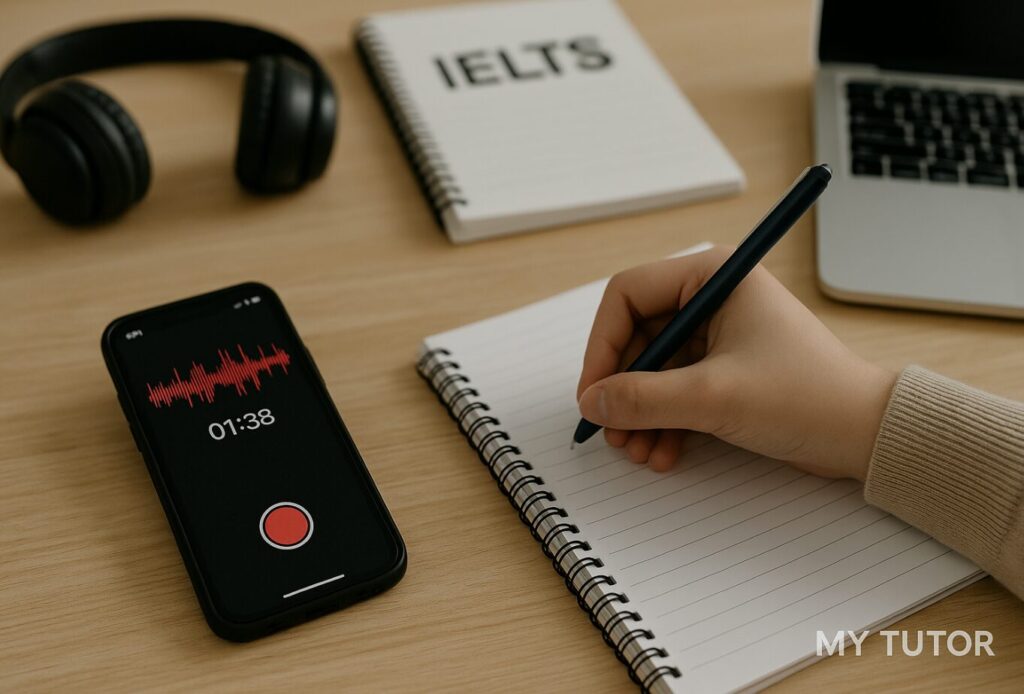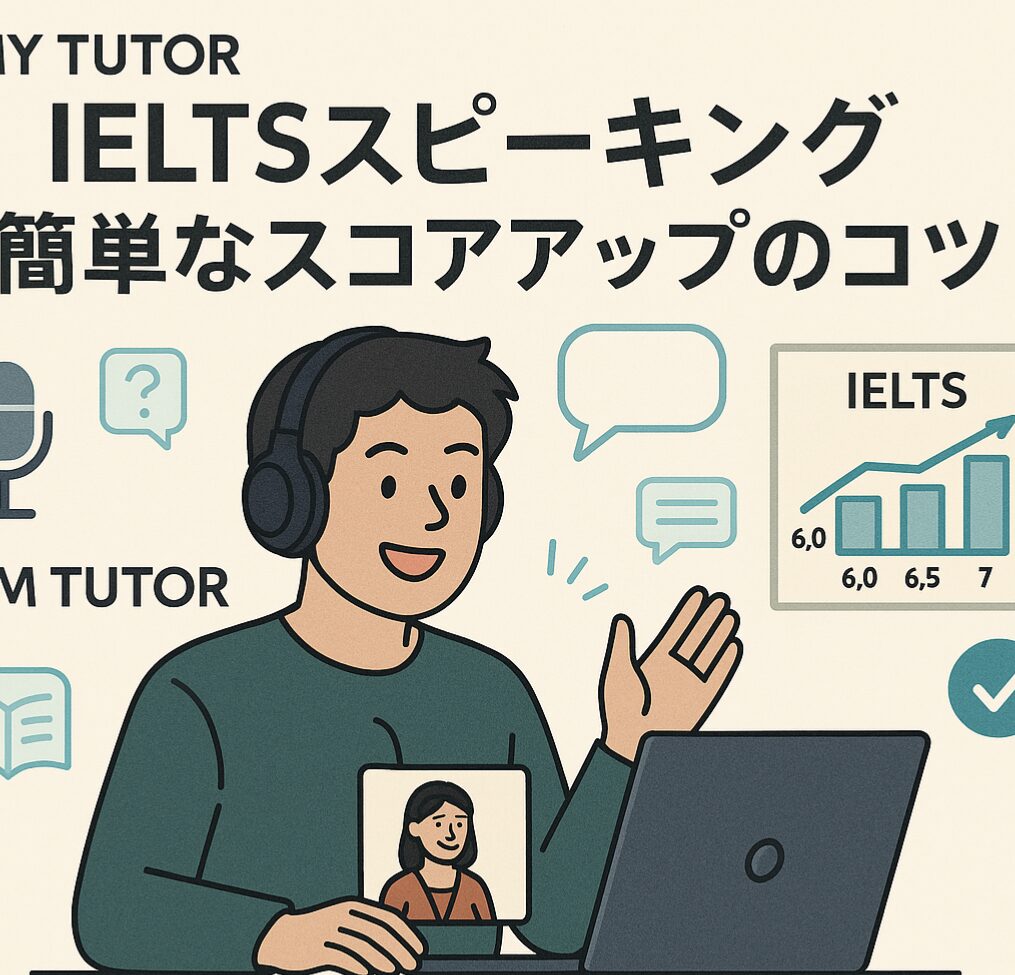
IELTS スピーキング スコアアップのコツ!
【スピーキング練習の録音→振り返りのやり方】
IELTSスピーキングでスコアアップを目指すなら、「録音して振り返る」習慣が欠かせません。話すだけの練習に比べて、自分のスピーキングを客観的に分析できるため、発音・文法・流暢さなどあらゆる面での改善が期待できます。
今回は、スピーキング録音の活用法と、効果的な振り返りのポイントを解説します。
◆ なぜ録音が効果的なのか?
録音には以下のようなメリットがあります。
客観的に自分の弱点を把握できる
試験官目線で「聞き取りやすさ」を確認できる
繰り返し聞いて細かくチェックできる
進歩を可視化できる(比較記録として)
とくに「同じミスを繰り返している」「言い直しが多い」など、自分では気づけなかった癖を発見できるのが大きなポイントです。
◆ 録音練習の流れ(おすすめのやり方)
▶ ステップ1:Part 1〜3の質問を準備
市販の問題集や公式サイトから問題を選び、**Part 1(自己紹介)、Part 2(1分間準備→2分間スピーチ)、Part 3(意見交換)**を1セット録音します。
▶ ステップ2:タイマーを使って本番同様に録音
スクリプトを見ずに、ノーカットで一発撮りが基本。Part 2では1分の準備時間も録音しておくと、メモの取り方の改善にもつながります。
▶ ステップ3:自分の音声を聞いて振り返る
録音後は以下のチェックポイントで振り返ります。
◆ 振り返りのチェックポイント
| チェック項目 | 内容 |
|---|---|
| ① 発音・イントネーション | 聞き取りやすかったか?強調・抑揚はあったか? |
| ② 文法 | 時制・冠詞・複数形のミスはなかったか? |
| ③ 語彙力 | 同じ単語ばかり使っていないか?自然な表現が使えているか? |
| ④ 流暢さ | 詰まったり、言い直しが多くなかったか?沈黙は短く保てたか? |
| ⑤ 一貫性・論理性 | 答えが論理的に展開できているか?まとまりがあるか? |
可能であれば、スクリプトを書き起こしてミスや癖を可視化すると、より深く分析できます。
◆ スコアアップにつなげる工夫
改善点はメモして次の練習に活かす
「動詞の時制ミスが多い」「使えるフレーズが少ない」などを記録しておくと、練習の質が変わります。1週間ごとに録音を比較する
成長を実感できるとモチベーションもキープしやすくなります。先生や友人にも聞いてもらう
自分だけで気づけない点をフィードバックしてもらうのも効果的です。
◆ まとめ:録音+振り返りが最強の自主トレ!
IELTSスピーキングの得点を上げるには、「話す練習」だけでは不十分です。
録音→振り返り→修正→再挑戦のループが、あなたの英語力を確実に引き上げます。
今日から早速、スマホ1台でできる録音トレーニングを始めてみましょう!

















